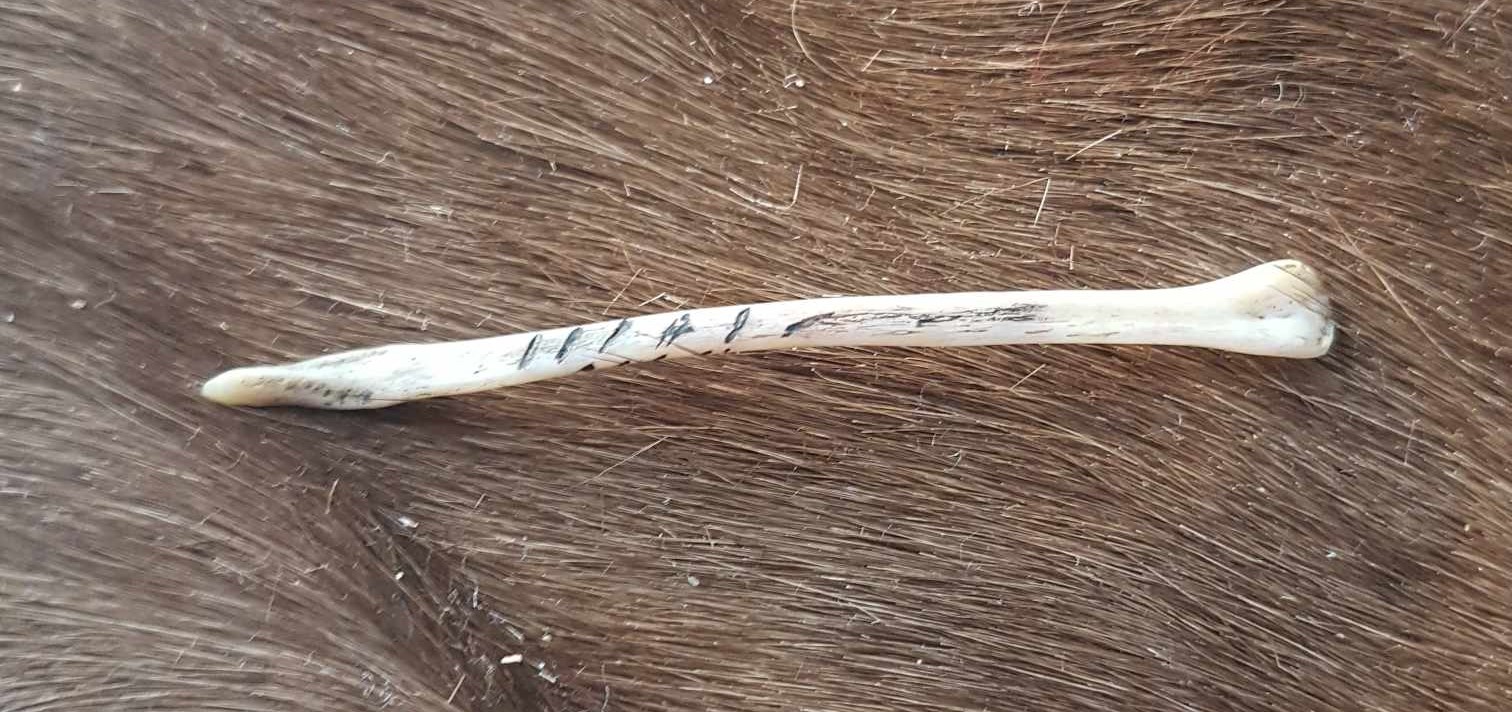Keldor is given a Writ
Jan. 16th, 2024 07:16 amShortly after Crown Tourney this autumn Crown Prince Stigot asked Keldor if he could make some stamps, so they could make coins for their reign. Keldor happily agreed, Stigot sent a sketch of what they wanted, and Keldor set to work. The stamps themselves are rather heavy, so rather than bringing them to 12th Night with us (we flew to the event with only carry-on luggage), Keldor used the stamps to make a handful of coins and brought those to the event.

In addition he brought a gift…

In addition he brought a gift…
One of Keldor’s friends is a hunter, who occasionally calls him up and says things like “I have a badger, do you want it?”, and Keldor picks it up, skins it, tanns the hide, and renders the fat to blend with wax for softening/water proofing leather. The last badger had a penis, and that species is one with a bone in that organ. Keldor extracted that bone, as one does. When he showed me the bone my first thought was “That looks just like a Viking Age ear spoon”, due to the scoop-shaped joint at one end. Keldor agreed that it does, and set the bone aside to dry. The week before Coronation he polished up the bone and added a tiny hint of scrimshaw pattern lines, to make it clear that this was a worked object, and not just a random bit of bone (no further shaping was required to make an ear spoon out of it).


When the Herald announced “Come talk to me if you have business at Coronation Court” Keldor placed himself directly in front of the herald before the announcement was even complete, causing the Herald to say “I see we already have one taker”, which got a laugh from the room. Then they stepped aside, and Keldor explained that he had the coins to present… and a gift.
After the Coronation ceremony itself, and the requisite swearing of fealty, the Herald summoned “Keldor Coinmaker” forward to present the coins, after which Keldor told Stigot “I also have a personal gift”, and explained that a King needs to be able to hear his advisors so that he can make wise decisions, and “therefore I give you this ear spoon with which to clean your ears“, and he handed it over. Stigot lifted the spoon to his ear as Keldor continued “…but I didn’t make the ear spoon, it was made by a badger, with the help of another badger. It is the bone that they use when they are making a new badger“, and laughter rippled through the hall, as everyone realised what he was talking about, and Stigot lowered the spoon away from his ear.
Keldor rather expected that his friend, the King, would promptly invite him to leave the court after receiving such a gift. Instead, Stigot turned Keldor around to face the assembled people, as the Herald read out a writ, charging Keldor to stand vigil to contemplate admission to the order of the Laurel, at an event to be agreed upon with the Crown, and Keldor was truly and deeply surprised.


The Vigil (and presumably the elevation, assuming Keldor say yes after everyone advises him about the duties and responsibilities that go with the job at title of Laurel) will take place at Double Wars, and he hopes to see all of his friends there. The exact day for the Vigil has not yet been set. However, their Majesties will not be on site the first weekend, so it will be later in the the event than that.
In addition to the Vigil itself, Keldor plans to bring his forge to the event, and will host an Open Forge Day wherein anyone who wishes to try their hand at smithing can come by and he will help them forge something. This will also be an opportunity to engage in discussions on what it means to be a Laurel in our society, and how crafts such as smithing relate to our peerage structure, so please come by, even if you don’t wish to engage in smithing yourself, as there is potential for some interesting round table discussions on these topics, in addition to forge work.
Thank you to King Stigot for the photos of the coins and ear spoon (since we forgot to take photos before giving them away).
Thank you to Kytte of the Lake for the photo of Queen Lofnheiðr, Keldor, and King Stigot as the writ was read by the herald (not pictured).
Thank you to Kytte of the Lake for the photo of Queen Lofnheiðr, Keldor, and King Stigot as the writ was read by the herald (not pictured).
The beautiful writ is the work of Ellisif Gydasdottir.



